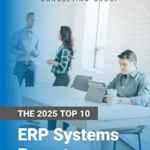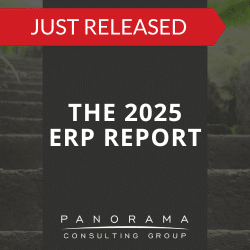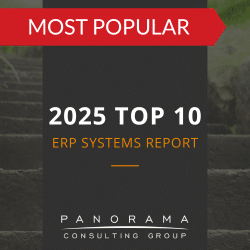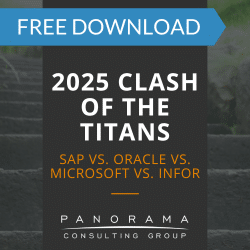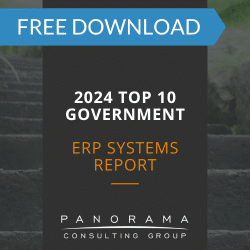- Microlearning in digital transformation helps organizations boost ERP adoption by delivering role-specific, on-demand training during critical system changes.
- CEOs are increasingly turning to microlearning for upskilling and reskilling because it fits seamlessly into employees’ workflows.
- Microlearning trends in employee training—like AI-driven personalization—are redefining how companies build agile, transformation-ready teams.
Lengthy seminars and outdated learning management systems (LMS) don’t align with how today’s employees consume and retain information. The modern workforce is distracted, remote, and under pressure to perform amidst technological changes.
This is where microlearning in digital transformation becomes essential. By delivering bite-sized, highly focused learning experiences, microlearning helps employees acquire critical skills in real time.
In addition to accelerating upskilling and reskilling, microlearning can ensure higher system adoption rates and close knowledge gaps that lead to ERP failure.
Today, we’re exploring how CEOs can transform the way their workforce learns by prioritizing bite-sized learning.
Change Management Case Study
The client recognized their need for more comprehensive change management, so they asked us to fill in the gaps. We developed a robust communication plan to supplement the vendor’s communication approach.
Why CEOs Should Prioritize Microlearning
Unlike traditional training programs that require weeks or months of commitment, microlearning is modular, adaptable, and seamlessly integrated into the flow of work. This means you can sustain continuous workforce development without draining productivity.
Here are five reasons why this training method should be a CEO-level priority:
1. It Reduces the Risk of ERP Failure
Enterprise-wide system overhauls often fail due to employee knowledge gaps. When workers struggle to use a new ERP system in a real-world context, implementation timelines stretch, operational bottlenecks emerge, and ROI plummets.
Microlearning enables employees to learn at the moment of need, improving retention and application.
For example, during and after a manufacturing ERP implementation, frontline workers may benefit from on-demand tutorials on how to enter production data and confirm work orders. The just-in-time access would increase its relevance, boosting knowledge retention.
Knowledge retention tends to be lower with traditional training methods. Yet, most ERP workflows necessitate some level of traditional training as a foundation. In particular, complex configurations and strategic decision-making still require traditional, in-depth training.
Microlearning can then reinforce this foundational knowledge by delivering targeted, role-specific guidance right when employees are applying it on the job.
2. It Powers Strategic Upskilling and Reskilling
Reskilling programs often fail because they require employees to step away from their primary responsibilities for extended training sessions.
Microlearning addresses this challenge by breaking down complex concepts into digestible lessons that employees can complete during downtime.
Expert Insight
A poorly executed microlearning strategy—one that lacks alignment with business goals or relies on vendor-provided content—can hinder upskilling. CEOs who invest in microlearning for upskilling and reskilling should work closely with HR, IT, and operations leaders to ensure microlearning initiatives are fully integrated into digital transformation efforts.
3. It Aligns with How the Modern Workforce Learns
Employees today consume information in short bursts—through podcasts, video tutorials, and quick mobile searches.
Microlearning aligns with these needs by delivering training in two- to five-minute segments. The brevity of the training increases employee engagement, which boosts knowledge retention.
The modern workforce has also become more dispersed. Microlearning is particularly beneficial for global organizations with employees across time zones. Anytime, anywhere training enables employees to learn at their own pace, which increases trust and reduces resistance to change.
4. It Supports a Data-Driven Approach to Employee Training
Microlearning platforms provide real-time analytics on engagement, completion rates, and knowledge retention. This allows CEOs to measure the direct impact of training initiatives on employee performance and business outcomes.
For example, while implementing a supply chain management system, a growing retail company might use a microlearning platform to track which modules their procurement employees are struggling with. Then, they could adjust training content to focus on the most challenging tasks. This level of agility ensures that training is not just a one-time event but a continuously evolving process.
5. It Future-Proofs Your Organization Against Disruption
Industry shifts are inevitable, whether driven by AI, regulatory changes, or shifting consumer behaviors. Organizations that have embedded microlearning into their culture can pivot quickly, retraining employees in weeks rather than months.
For instance, financial institutions adapting to AI-driven risk modeling or retail companies transitioning to omnichannel commerce can use microlearning to keep employees updated on new technologies and processes in real time.
Expert Insight
Microlearning won’t future-proof your workforce unless it’s integrated into a comprehensive change management plan. Our change management consultants always tell clients to align all training efforts with stakeholders’ needs and concerns. Up-to-the-minute information isn’t a cure-all for disengaged employees who don’t understand the “why” behind digital transformation.
Microlearning Trends That are Changing Employee Training
As digital transformation accelerates, microlearning is evolving to meet new challenges. CEOs who understand these trends can stay ahead of the curve and ensure their training strategies remain effective.
Here are four microlearning trends in employee training that every executive should be aware of:
1. AI-Driven Personalization
AI is transforming microlearning by automatically tailoring content based on an employee’s role, skill level, and learning preferences.
For CEOs, this means training programs can be optimized for maximum efficiency and minimal disruption, reducing the time it takes for employees to reach full competency in new roles or with new systems.
2. Integration with Enterprise Systems
Microlearning is no longer confined to standalone LMS platforms. Organizations are embedding microlearning modules directly into ERP systems, collaboration tools, and even augmented reality (AR) interfaces.
Seamless integration ensures that employees can access training without leaving their workflows—a convenience that can dramatically improve adoption rates.
3. Just-in-Time Training for Frontline Workers
Microlearning is evolving to provide training through mobile apps, wearable devices, and voice-activated assistants.
For example, a warehouse employee might use a mobile app to troubleshoot an inventory system issue by scanning a barcode and accessing a short video tutorial. Rapid troubleshooting without the need for IT support is a key benefit of microlearning in digital transformation.
4. The Rise of Micro-Credentials
Traditional degrees and certifications are losing relevance as organizations prioritize skill-based hiring and internal talent development.
Microlearning is fueling this shift by enabling employees to earn micro-credentials. These bite-sized certifications can help employees develop in-demand competencies, such as data analytics and cloud computing.
For CEOs, this means greater talent mobility within the organization. Instead of hiring externally, companies can track employees’ micro-credentials and identify internal candidates for leadership or specialized technical roles.
Driving ERP Adoption Through Microlearning
As industries become more reliant on automation and AI, employees must continuously adapt. Organizations that embed microlearning into their culture can develop a workforce that learns as fast as the business evolves.
Our independent ERP consultants can help you build more adaptive, future-proof teams. Contact us below to learn more.
